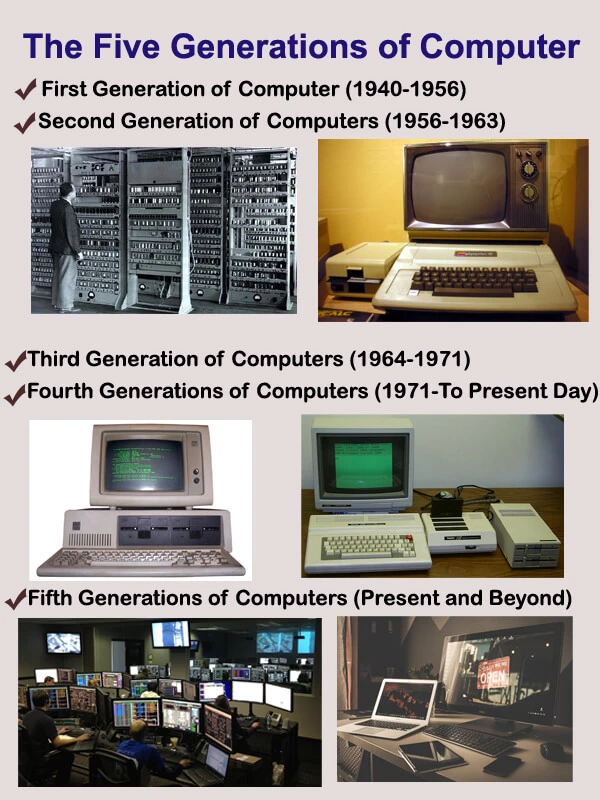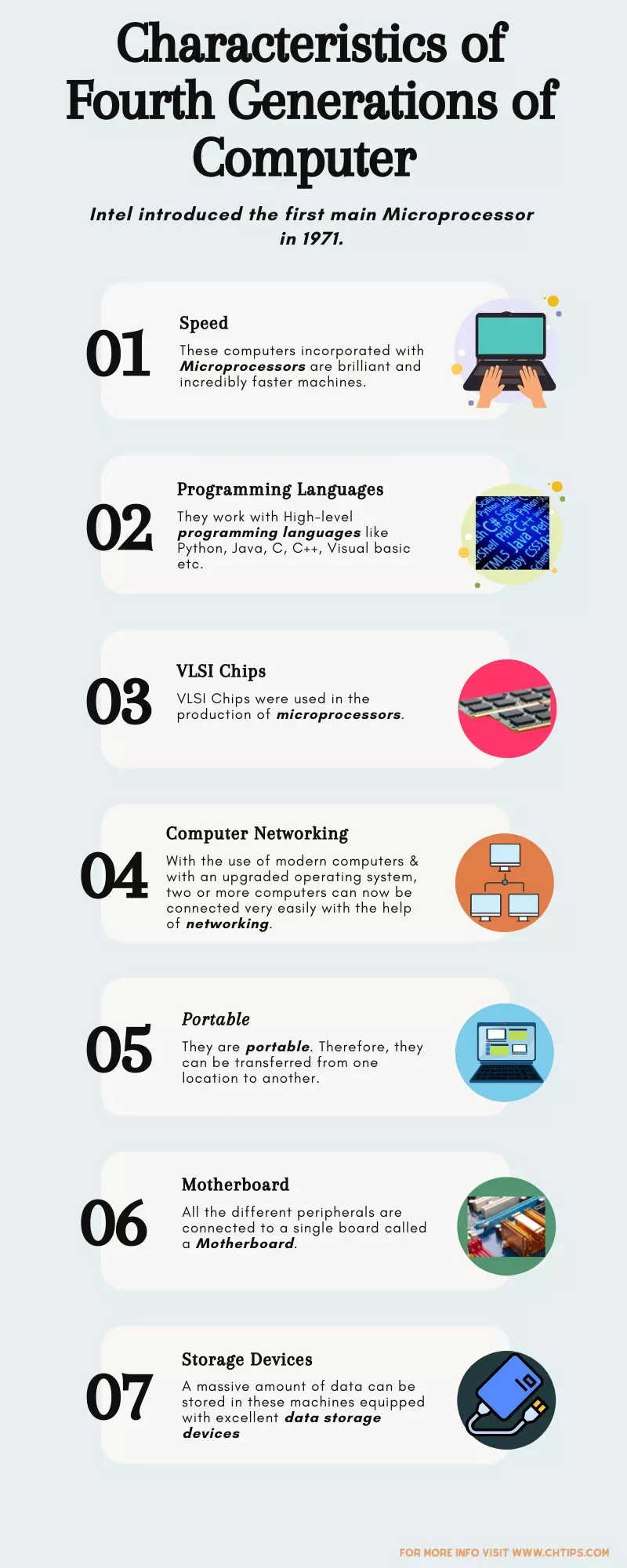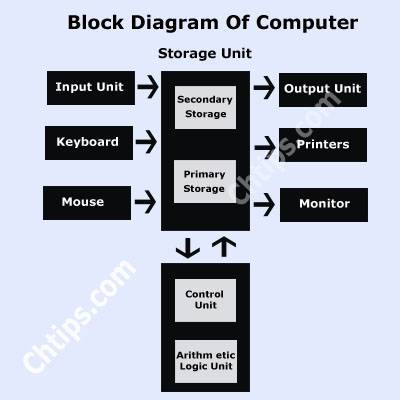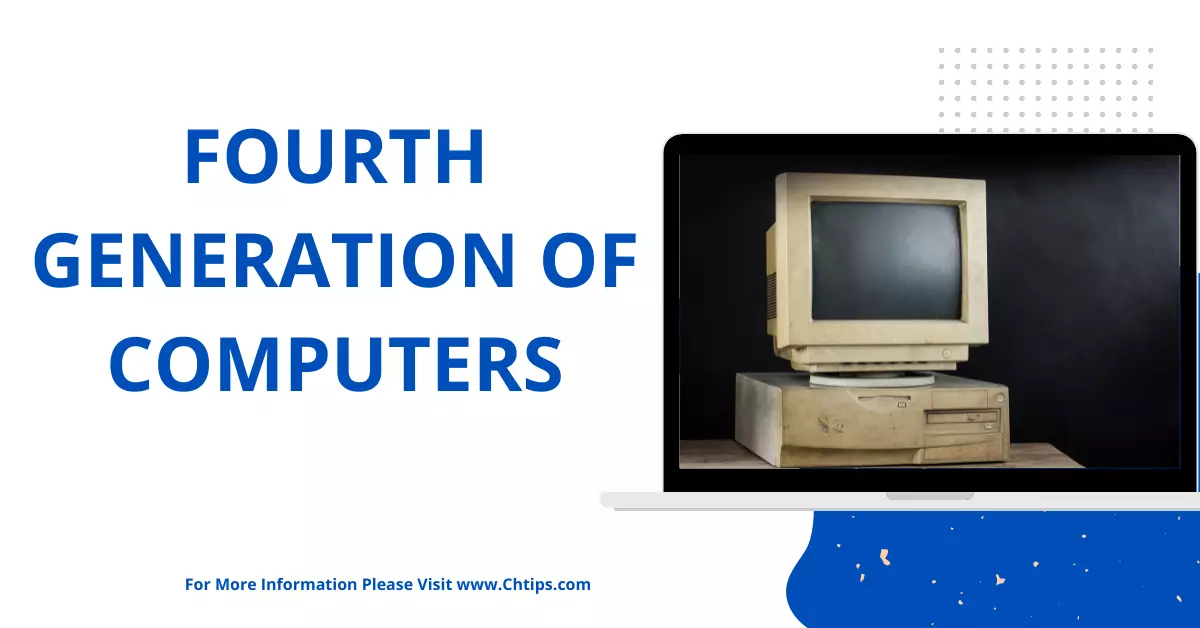Introduction To 4th Computer Generations
The fourth generation of computers used microprocessors in their circuit.
It was designed and developed by Intel Corporation in 1971 and is called 4004 CPU [Central Processing Unit].
Therefore, it can be stated that the fourth generation of computers started in 1971.
Computers are considered to be the greatest invention of all time. Charles Benjamin Babbage is known as "The Father of Computer".
Charles Babbage invented the first mechanical computer. The invention of the mechanical computer is one of the great inventions.
He was in the fields of Mathematics, engineering, politics, economy, computer science, and philosophy. He is well known for his contribution to mathematics and computing.
Charles Babbage is well-known for his detailed plans for mechanical Calculating Engines, Difference Engines, and Analytical Engines.
The development and up-gradation of computers are everlasting processes.
The phase in which computers are designed and developed is called "Generations of Computers".
A few decades ago computers used to be installed in an enormous room which used high electricity and power that generated a lot of heat.
In this modern era computers can be fitted on the palm, they are developed in such a compact design with powerful processing powers that can perform tedious and complex problems within a fraction of a second.
Explain What is Fourth Generation of Computers?
After developing the microprocessor [4004] by Intel Corporation in 1971, the timeline of the 4th generation computer is considered between (1971-1984).
The fourth generation of computers used a “Microprocessor” instead of transistors and vacuum tubes in their circuitry.
The computer that uses microprocessors is called micro-computers.

The microprocessor or CPU are developed using large scale integration technology.
| VLSI | Very Large Scale Integration |
| ULSI | Ultra Large Scale Integration |
| LSI | Large Scale Integration |
Large Scale Integration is an innovative technology where hundreds and thousands of components such as Transistors, capacitors, and resistors are integrated into a small silicon chip.
In 1981 IBM [International Business Machine] designed and developed their first personal computer [microcomputer].
later Apple, one of the tech giants, also built its personal computer in 1981.
The fourth generation of computers was fast, efficient, and inexpensive compared to other computer generations and therefore easily replaced their counterparts in the computer market.
Some famous microprocessors
- Intel Pentium
- AND
- Apple II
They also required less space for installation, and they emitted less heat.
The Internet, GUI [Graphical User Interface], and operating systems like MS-DOS and Windows Operating System were developed.
The use and utilization of GUI technology gained popularity as users could use the mouse and other pointing devices.
These computers were capable of performing all arithmetical and logical operations at high speed with deadly accuracy.
They also were capable huge amounts of data into their memory.
Modern processors have the fantastic processing power and considerably reduce the price, size, and energy consumption.
This fourth generation of the computer used high-level programming languages like c, c++, java, etc.
Famous microprocessor manufacturing companies are listed below according to their market share.
- Intel Pentium
- AMD
- Cyrix
- Motorola 68000
- Zilog Z80
Main Characteristics of Fourth Generation of Computer Systems?

- The fourth-generation computer uses microprocessors that are fast, efficient, and reliable.
- They are more advanced machines than their competitors.
- They are very easy to use and handle.
- They possess GUI [Graphical User Interface], which overall increases their popularity.
- They are compatible with high-level programming languages like PYTHON, C, C++, etc.
- They are low in maintenance compared to other computers.
- They produce less heat.
- They are compact.
- VLSI Chips were used in the production of microprocessors.
- With the use of a modern computer with an upgraded operating system, two or more computers can now be connected very easily with the help of networking.
- They are portable. Therefore, they can be transferred from one location to another.
- Their parts are not that expensive and readily available in the market.
- A massive amount of data can be stored in these machines equipped with excellent data storage devices.
- Due to their excellent features, they are used almost daily for personal and official work. This is the best characteristic of the fourth generation of computer systems.
Examples of Fourth Generation of Computers
- Dec 10
- PDP 11
- PCs
- STAR 1000
- PDP 11
- CRAY-1 (Super Computer)
- CRAY-X-MP (Super Computer)
- CRAY2
- CRAY Y-MP
- CRAY Y-MPC
- IBM 4341
- IBM PC
- Apple II
- VAX 9000
When was the 4th Generation Computer Invented?
The fourth-generation computer used a microprocessor designed, developed, and invented by Intel Corporation in 1971.
Benefits and Advantages of Fourth Generation of Computers
- The 4th generation computers are used as personal computers as well as in commercials.
- High-level programming languages can be used in fourth-generation computers like C, C++, JAVA, etc.
- They are not that expensive compared to other computer generations.
- Less amount of heat and energy is produced.
- They do not require an air conditioner for cooling.
- They are inexpensive.
- They are highly portable.
- These computers are very easy to use and handle.
- They are efficient and reliable machines.
- They use advanced operating systems.
- Their hardware quality is super fine.
Disadvantages of Fourth Generation of Computers
- The applications and software used in this computer were complex to use.
- The computer architecture and design were very complex.
- The need for the Internet increased
- Computer networks increased virus spreading and infection.
- They required more memory than other computers.
The Architecture of Fourth Generation Computer
The computer system mainly consists of three types
Central Processing Unit [CPU], Input Devices, and Output Devices.
The central processing units are categorized into ALU (Arithmetic Logic Unit) and Control Unit (CU).

The raw data, information, and instructions are presented to the computer system with the help of input devices like a keyboard and mouse.
This data and information are transferred to the central processing unit for further processing, and later the output is generated with the help of output devices like printers and monitors.
Computer systems are capable of storing huge volumes of data and information in secondary storage devices temporarily as well as permanently.
These are called storage devices.
The Central Processing Unit [CPU] is responsible for processing all the Instructions given to the computer system.
Fourth Generation of Computers PDF Download Free
All Generation of Computer [1st To 5th]
| # | Computer Generations | Timeline | Hardware |
| 1 | First Generation of Computer | 1940-1956 | Vacuum Tubes |
| 2 | Second Generation of Computer | 1956-1963 | Transistor |
| 3 | Third Generation of Computer | 1964-1971 | Integrated Circuit (I.C.) |
| 4 | Fourth Generation of Computer | 1971-1980 | Microprocessor |
| 5 | Fifth Generation of Computer | 1980- Till Now | Artificial Intelligence |
Programming Languages in Computer Generations [4GLs]
| # | Computer Generation | Languages |
| 1 | First Generation of Computer | Machine Level Language |
| 2 | Second Generation of Computer | Assembly Language |
| 3 | Third Generation of Computer | High-Level Languages |
| 4 | Fourth Generation of Computer | Perl, Python, Ruby, SQL, and MATLAB [High-Level Languages] |
What are the Three Features of Fourth Generation Computers?
The basic three features of fourth generations of computers are as follows.
- The fourth generation of computers uses microprocessors in their circuitry.
- They use VLSI [Very Large Scale Integrated] Chips.
- They have good speed, accurate and reliable machines.
- They are inexpensive machines.
Fourth Generation Computers are Based On?
The fourth-generation computers are based on a microprocessor.
People Are Also Reading
- Advantages and Disadvantages of Computer
- Advantages and Disadvantages of Fifth Generations of Computer
- Advantages and Disadvantages of First Generation Computer
- Characteristics and Features of Third Generation Computer
- 12+ Characteristics of Fourth Generations of Computer
- Advantages and Disadvantages of Fifth Generations of Computer
- Differences Between Third and fourth Generation of Computers
- Computer Basic Tutorials
Difference Between Fourth Generations and Fifth Generations of Computer
| # | 4th Generation Computer | 5th Generation Computer |
| 1 | They Used Microprocessors. | They use and utilized Artificial Intelligence. |
| 2 | They are faster than all other computers except fifth-generation computers. | They are incredibly faster machines compared to other generations. |
| 3 | They are fast computers. | They are faster and smarter machines. |
| 4 | They can not learn on their own. | They are designed and developed to learn on their own using artificial intelligence. |
| 5 | Languages C and C++, Java, and Net are used | Prolog |
| 6 | Some Examples are Intel Pentium AMD Apple II | Some Examples are PARAM 10000 INTEL IPSC-1 |
Frequently Asked Questions [FAQs]
When was the 4th Generation Computer Invented?
Intel Corporation invented the microprocessor in 1971; with the microprocessor’s help, the fourth generation of computers was started.
Who Made Fourth-Generation Computers?
Intel released its first single-chip microprocessor [4004]. Federico Faggin led the development of the microprocessor.
The Price of the First Microprocessor?
The Intel 4004 CPU was sold for $60.
The Fifth Generation Computer Used?
Artificial Intelligence.
Which Chip is Used in Fourth-Generation Computers?
The Chip is called a “Microprocessor”.
What is the Main Memory of the 4th Generation Computer?
Magnetic Core Memory is used for data and information storage as it is faster to access data compared to other memory.
Fourth Generation of Computer-Based on
Fourth Generation of Computer-Based on “Microprocessor” commonly called as “Processor | CPU”.
Get In Touch
I have also written and compiled some articles on computers and telecommunications please go through them.
I hope you will like reading it.
I hope that all the questions and queries related to the Fourth Generation of Computers have been answered here.
If you have any queries and questions related to characteristics and features of fourth generations of computers.
Don’t hesitate to contact me, and if you need to add, remove, or update anything from the article, please let me know in the comment section or via email.
I will be more than happy to update the article. I am always ready to correct myself.
I was hoping you could share this article with your friends and colleagues; this motivates me to write more on related topics.
!!! Thank You !!!
